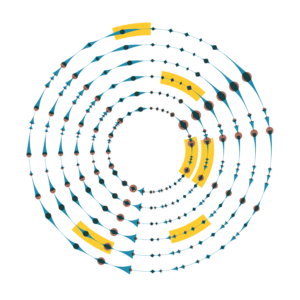The Longplayer Conversation 2023
The Longplayer Conversation 2023 will take place on Thursday 28th September at the British Library, London. This year’s conversationalists are Richard Sabin, Principal Curator of Mammals at the Natural History Museum, and Dr. Sada Mire, Associate Professor of Heritage at University College London.
Richard Sabin is a Principal Curator at the Natural History Museum, London, where he specialises in the study of marine mammals. He publishes widely, is committed to public engagement, accessibility, and diversifying museum audiences. He works closely with the arts and humanities to explore ‘hidden’ narratives of natural history collections.
Dr. Sada Mire is a Somali archaeologist, art historian, science communicator, and presenter. She fled Somalia as a refugee, becoming a Swedish citizen, and holds a Ph.D. from University College London’s Institute of Archaeology, where she is serving as Associate Professor of Heritage Studies. She is the founding director of Horn Heritage Foundation and its Digital Museum, working on research and conservation of heritage across the Horn of Africa.
Please book your tickets via the British Library, here.
Initiated in 2005, the Longplayer Conversation invites leading cultural thinkers to conduct a public conversation inspired by Longplayer, a project which unfolds over the course of a millennium.
Previous Longplayer Conversations have included Denise Ferreira da Silva and Timothy Morton, Chris Watson and Sir David Attenborough, Marina Warner and Ali Smith, Brian Eno and David Graeber.


